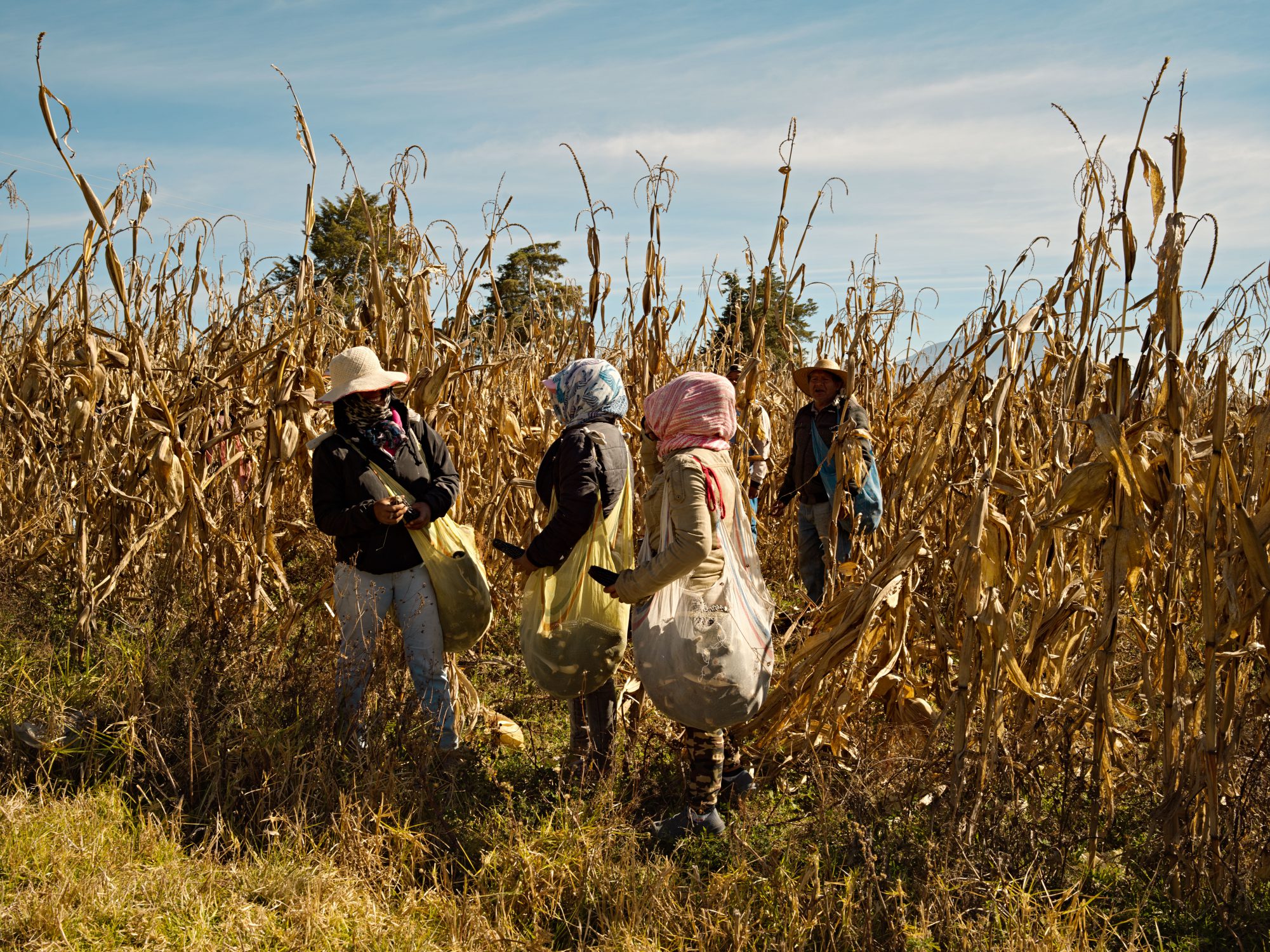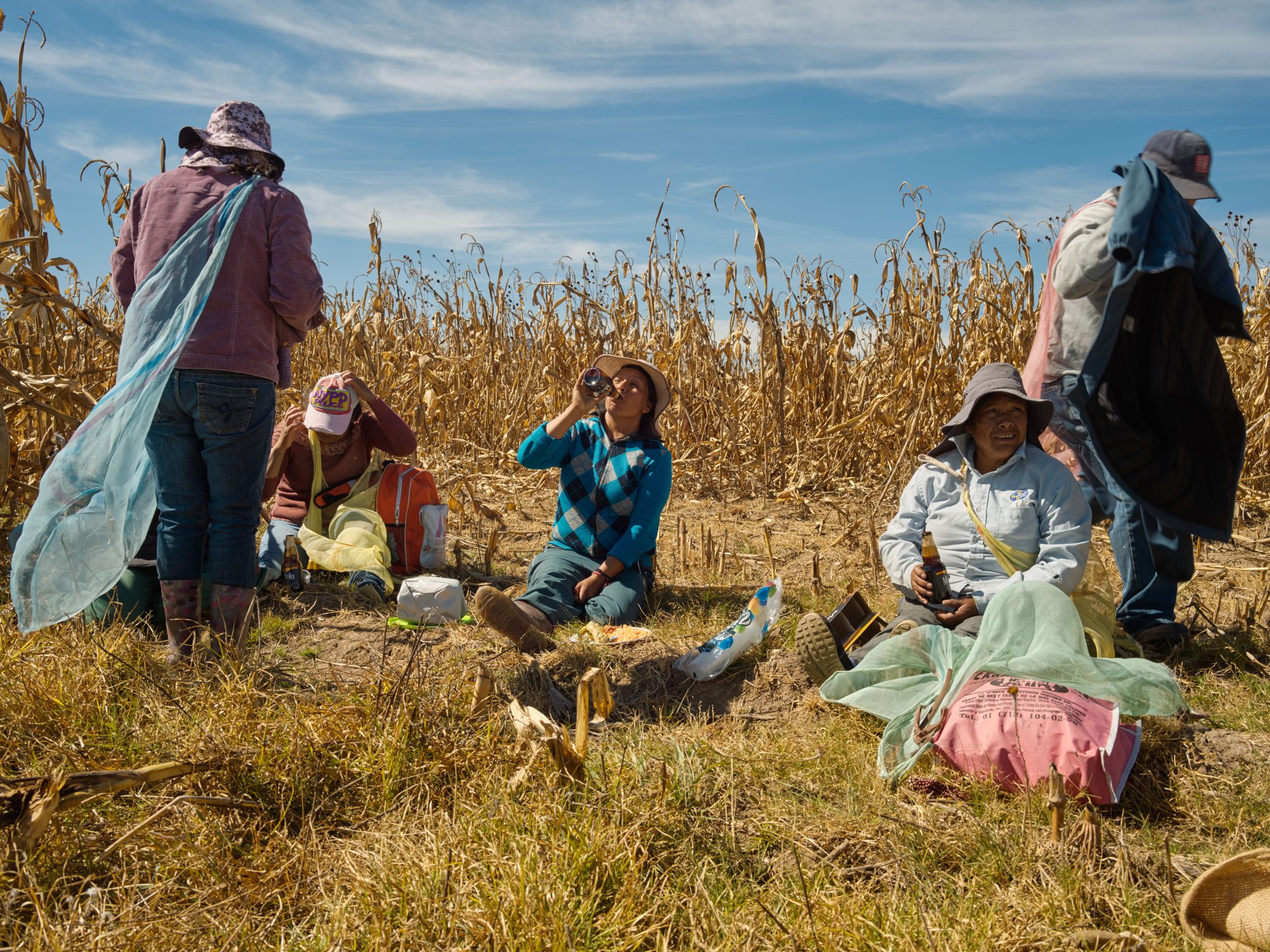

Hence the divine nature of maize, as the god Centeotl. When maize is young, growing and flowering, it is the goddess Xilonen. When ripe, it becomes Chicomecoatl or ‘Seven Serpents’, the female counterpart to Centeotl.
Picked as cobs to be stored to guard against famine, maize was and remains the staple of the Mexica diet, used to make tortillas, tamales, atole and the pinole that sustained warriors during military campaigns. Three of the months of the Mexican Indian calendar, Tozoztontli, Huetyzoztli and Ochpaniztli, were dedicated to worshipping maize, but the sacred foods for all the other months were also always made with maize.
Source: Museo National de Antropologia (MNA), Mexico City
One of ancient Mexico’s most important contributions to humankind
Maize was a gift from the gods. After the creation of the Fifth Sun, Quetzalcoatl set about searching for it, in order to give it to man.

The essence of Mexican cuisine
Tortillas represent the essence of Mexican cuisine. Made with corn dough, they are eaten as a basic ingredient in all kinds of forms and in all kinds of preparations. About 90 per cent of tortillas and 82 per cent of other commonly eaten products now contain genetically modified (GM) corn. Mexicans consume about half a kilo of maize a day.

"With a view to self-sufficiency and food independence, our country must focus on sustainable and culturally adapted agricultural production in accordance with Mexican farming traditions."
Malin Jönsson
Director of Semillas de Vida
In addition, she has been professor of Rural Problems and Human Rights at the UNAM National School of Social Work since 2013. She has investigated issues related to the socio-economic situation of farm grain producers. And has published several scientific articles and book chapters.
Mexican President Andrés Manuel López Obrador caused a minor earthquake when he ended the year 2020 with a decree that will phase out both the use of glyphosate as a pesticide and the cultivation of GM maize.
Malin has lived in Mexico for 13 years and has worked on corn issues. She has been working with the Semillas de Vida Foundation since August 2017. A civic association committed to preserving, protecting and developing native farm-owned corn seeds and a healthy diet; from seed to table.

Milpa
An agricultural practice already more than 4,000 years old, milpa flourished in Yucatan Mexico.
Maize is often grown in mixed fields along with other crops, such as beans and pumpkins. The maize benefits from the presence of the beans, the roots of which process the nitrogen in the soil that the maize needs, while the beans have the opportunity to climb up the tall maize stalks.

Milpa and Biodiversity
Modern agricultural techniques are generally dependent on crop rotation in fields that produce just one crop. They are productive, but they cause the exhaustion of the soil, because repeated cultivation leads to erosion and the depletion of the nutrients needed to keep the crops healthy.
In a traditional milpa farm a dozen crop varieties are planted at the same time (usually maize, beans and pumpkins).
Because each plant provides the nutrients needed by one of the others, the soil is never completely exhausted. As a result there are fields in Mexico that have been under cultivation continually for 4,000 years without any loss of productivity, a situation unknown in other parts of the world.

"When a community's environment is healthy, so are its people."
Rocio and Horacio
Researchers and Farmers
Rocio teaches sustainable development, while Horacio teaches agricultural science. They use their home and their milpa as the main setting for teaching their neighbours and university students about more sustainable practices.
Rocio Albino Garduno and Horacio Santiago Mejía live with their two daughters in the hills of San Juan Coajomulco, Mexico, a region populated by the Mazahua native community.
As professors, Rocio and Horacio are passionate about sustainability, and they bring their work home with them. In front of their house is a milpa that uses an intercropping system not traditional to the area. Through their work, Rocio and Horacio encourage their community to improve current practice to the advantage of both the environment and their own lives.

The men were loaded down with a great weight when they fetched the sacks of corn cobs from the field, and we would say to the young people who carried them, ‘Now you can get married.’
At home grandmother selected the seed, to make sure the job was done well. She would say to us, ‘Don’t touch the seed, or your teeth will grow out crooked.’
And if we accidentally threw away a grain, we’d be scolded, because ‘every grain of corn has its own life’.
Mojo kja juajma!
Let’s go to the maize field. That’s what our grandparents used to say to us in the Mazahua language (jñatrjo).
We knew then that a day of hard work was ahead for the whole family, but that we would return home with a good harvest.

Research by the UN Food and Agriculture Organization (FAO) shows that intercropping can benefit small farmers.
The common practice of growing exclusively maize and using herbicides has meant that the diversity of maize seed has declined.
Rocio and Horacio advocate a polyculture system (MIAF), with fruit trees and other crops planted between the maize to improve moisture retention, reduce water erosion, encourage a varied diet and increase the family’s income.

Rocio explains how the system can prevent erosion.
“The barrier created by trees ensures that water cannot flow away but is held in place, and eventually terraces emerge. This environment reduces erosion, and as for nutrients, it creates dietary diversification.”
It also reduces the need for herbicides and pesticides.
Growing several different crops simultaneously prevents the build up of pests and minimizes the need to use expensive and dangerous chemical insecticides.
This system clearly benefits the environment, but it has health and financial advantages too. Because the growing of crops such as fruit trees is not common in this region, the produce can be sold at markets, bringing in additional income.
As part of the courses they offer, Rocio and her husband invite their students both to work on the farm and to spend time in their house.
Their educational approach involves living in the community and getting to know people there.
Through the university, Rocio and Horacio are training a new generation of farmers.
Intercropping enables farmers to achieve several production and maintenance goals simultaneously. By growing a mixture of crops, farmers profit from the capacity of cultivation systems to reuse their own stored nutrients and from the tendency of certain crops to enrich the soil with organic material.

"Corn is the center of our culture, part of our life and body."

"Practices related to corn are passed down from generation to generation."

"A young man is considered an adult when he can load a sack of corn cobs"

"Children are considered grown, once they can take on simple tasks in the cornfield."

"Management of the plot indicates periods of growth of the person. There are very distinct roles. Women put the seed in the ground and select and store it. Men are responsible for the heavy work."

"There are about 700 ways to cook corn in Mexico. Growing corn is an aspect of daily life and culture."

From Seed to Table
Many small maize producers have their own seed production system and seedbanks, sometimes with more than thirty varieties.
Generations of farmers have cultivated ancient varieties of maize with seeds from their own seedbank, using a centuries-old method of simple positive mass selection by selecting the best cobs after harvest and using them as seed for subsequent years.
With maize that’s a simple matter, since the corn that is eaten is also the seed for later harvests.

Climate Change
Instead of neat, straight rows, Eulalio and Gustavo now plant their crops in slightly curving lines that follow the slope of the undulating maize field, so that scarce rainwater no longer runs away.
This is a more effective means of water management, although it does demand significant adjustments to ways of planting and harvesting the crop. Machines and methods are being adapted with the help of CIMMYT and applications are being made for subsidies to enable changes to the machinery.
CIMMYT, is a non-profit international agricultural research and training organization focusing on two of the world’s most important cereal grains, maize and wheat, and related cropping systems and livelihoods.
Eulalio and Gustavo are proud of this new way of working, but they are finding it hard to persuade other farmers to make similar changes. Traditions are sacred here.
"If you grow native corn, every plant, like human beings, is unique."
Eulalio Zúñiga Ramírez
Producer Native (Creol) maize

Eulalio Zúñiga Ramírez and his son Gustavo Zúñiga are fifth and sixth generation producers of native (Creole) maize varieties in San Miguel de Allende.
For generations they have cultivated ancient varieties of maize with seeds from their own seedbank, using a centuries-old method of simple positive mass selection by selecting the best cobs after harvest and using them as seed for subsequent years.
With maize that’s a simple matter, since the corn that is eaten is also the seed for later harvests.
Many small maize producers therefore have their own seed production system and seedbanks, sometimes with more than thirty varieties.
Eulalio and Gustavo were visited by a major seed company that tried to persuade them to use GM seed. It would increase yields considerably and prevent infestations and diseases. The seeds were even coated with chemicals to make them more resistant to all kinds of pests.
They were not convinced, but they were happy to accept the offer of two free bags of ‘miracle seed’. They sowed it in a distant test plot, to avoid any cross-pollination with their own seed. After harvesting both maize grown from their own seed and the ‘miracle maize’, they were forced to conclude that their own maize was both better and more productive.
"We have been offered improved commercial seeds and we have sowed them, they need more water, more fertilizer and pests do them more damage."
Gustavo Zúñiga
Producer Native (Creol) maize

GUSTAVO ESTEVA, THE MAN WHO INVENTED ‘NO CORN, NO COUNTRY’
Gustava Esteva, one of Mexico’s most distinguished economists and senior civil servants during the 1970s, gave it all up to live the simple life of a traditional peasant on three acres of land in the village of San Pablo Etla in Oaxaca, a province of mostly Indigenous peoples in southern Mexico. From this perch on the world, which he calls “Mexico profundo,” Esteva became one of the leading prophets of the developing Zapatista movement, later serving as their advisor in negotiations with the Mexican government,
Esteva is recognized internationally as the leading historian and philosopher of the Zapatista “attitude,” the force behind successful rebellions in Chiapas and Oaxaca, often called the “first post-modern revolutions,” and sometimes understood as the first food-based revolutions.
Bron: Wayne Roberts author of the No-Nonsense Guide to World Food
No Corn No Country
Semillas de Vida Foundation is part of the ‘No corn,no country’ campaign, part of the ‘Alliance for our Tortilla’ and the food security alliance. They brings together the efforts of different rural and urban actors to achieve a balance between sustainable agriculture and a healthy diet, strengthen Mexican agrobiodiversity and nurture life from the seeds. Their vision: To achieve a harmonious and conscious relationship of man with nature, agriculture, and food in Mexico.
We have selected another two stories that might inspire you.


